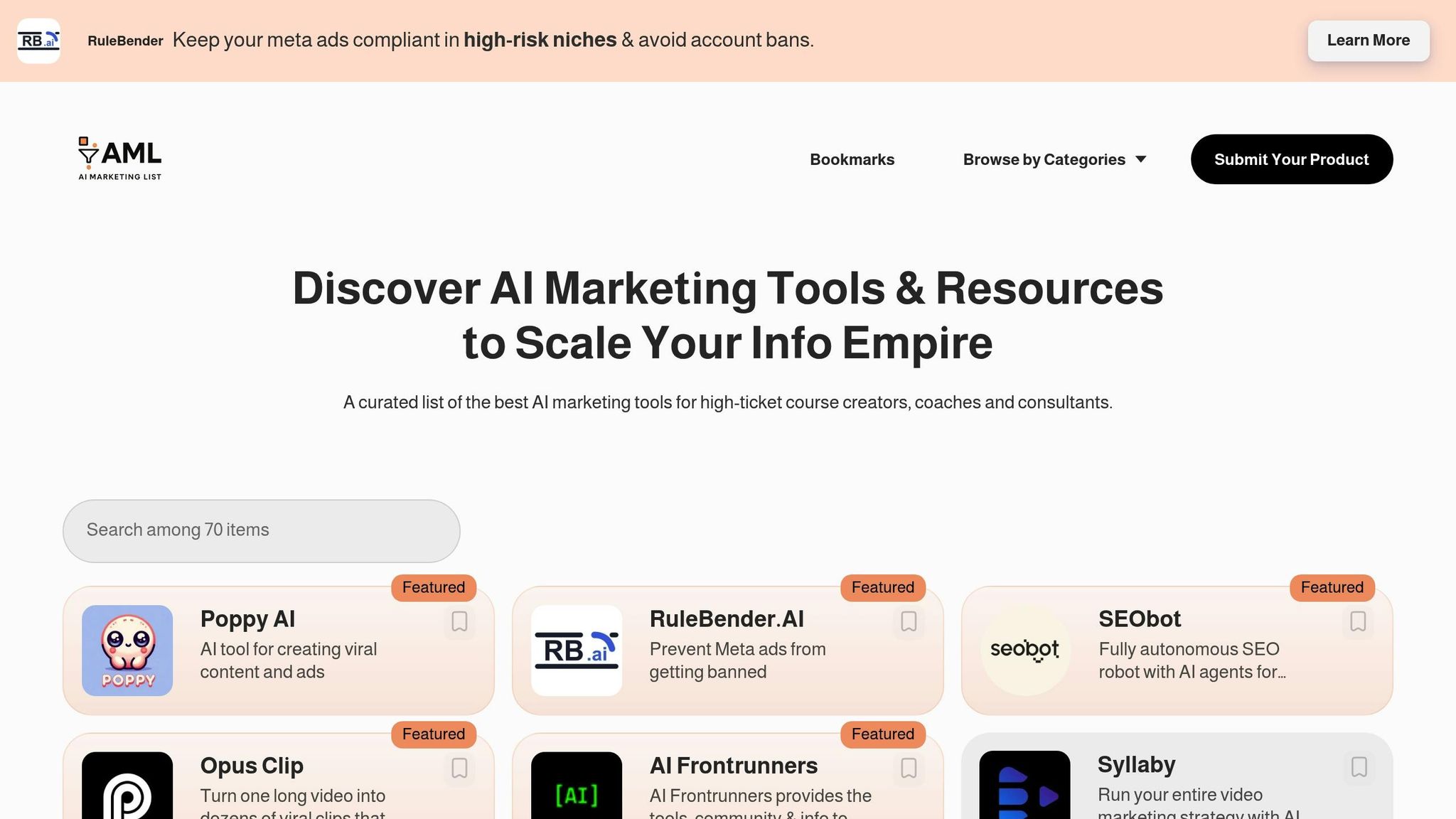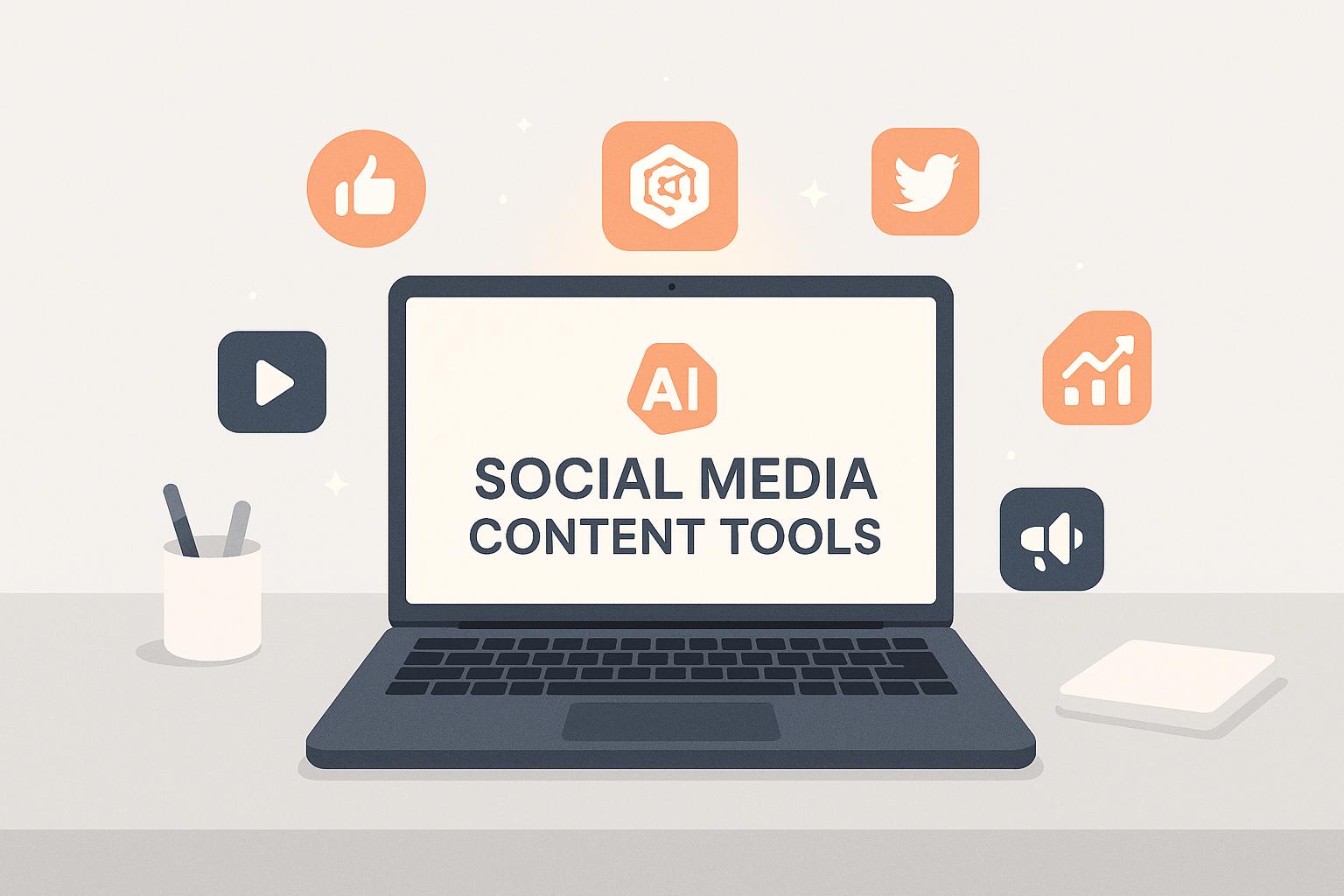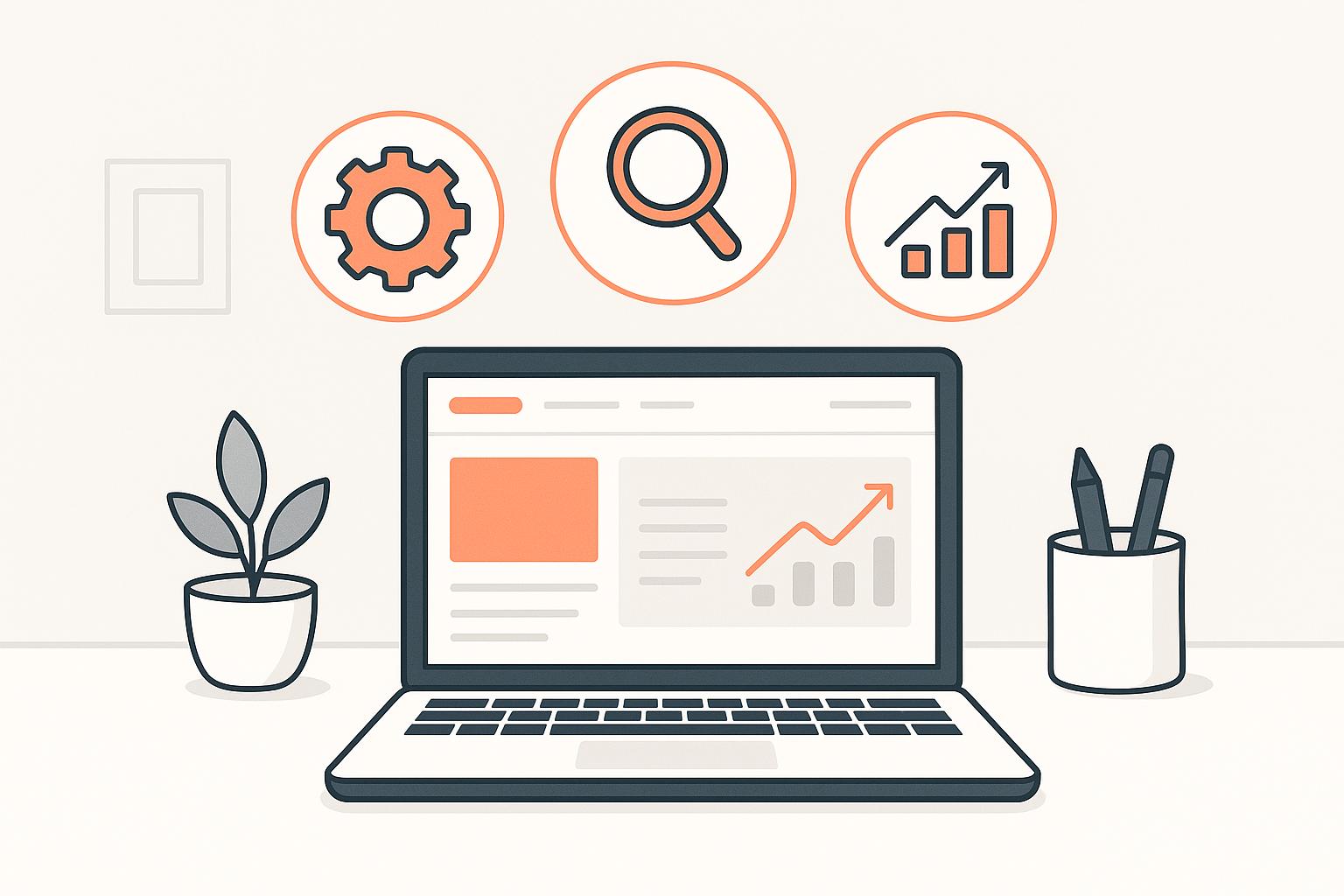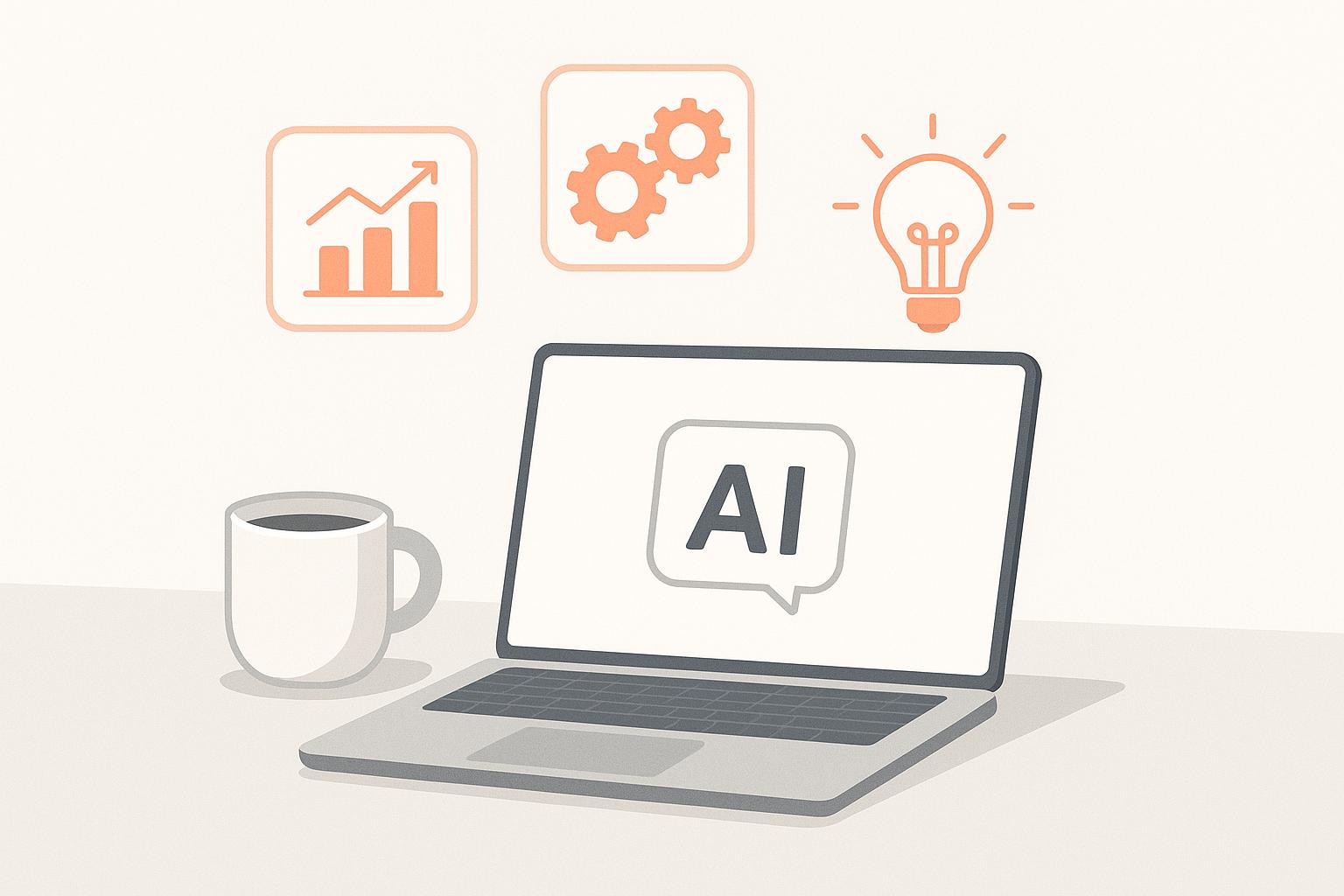AI copywriting is transforming email marketing by automating content creation and improving results. Businesses using AI report higher engagement and revenue, with personalized emails driving 26% higher open rates and 41% more revenue. Here's what you need to know:
- What AI Does: Creates subject lines, email content, and CTAs tailored to audience preferences.
- Why It Works: AI analyzes customer data to deliver relevant and timely messages.
- Key Benefits: Saves time, boosts ROI (42:1), and improves engagement (13.44% higher click-through rates).
- Popular Tools: Jasper, Copy.ai, Writesonic, Rytr, and ChatGPT offer features like personalization, analytics, and A/B testing.
- Best Practices: Use frameworks like AIDA or PAS, focus on personalization, and test campaigns with AI for better performance.
AI tools are no longer optional - they're essential for effective email marketing. Start small, define your goals, and choose tools that align with your needs.
7 AI Tips For Email Copywriters To Become BETTER
Best AI Tools for Email Copywriting
AI-powered copywriting transforms generic emails into engaging, personalized messages that drive results.
Popular AI Email Tools
Jasper: With a 4.5/5 rating and plans ranging from $49 to $69 per month, Jasper helps craft attention-grabbing subject lines, compelling email content, and strong CTAs while maintaining your brand's tone.
Copy.ai: This tool offers a free tier (up to 2,000 words) or a Starter plan for $49 per month. It's particularly effective for creating product descriptions and promotional emails tailored for e-commerce campaigns.
Writesonic: Starting at $15 per month for Chatsonic plans and $20 per month for the Individual plan, Writesonic earns a 4.5/5 rating. It's a versatile choice for businesses needing both short email copy and longer newsletter formats.
Rytr: Known for affordability, Rytr’s premium plans start at just $9 per month. While it lacks some advanced features, it’s a focused and reliable option for basic writing tasks.
ChatGPT: As the most widely used AI tool with 200 million users as of October 2024, ChatGPT offers a subscription for $20 per month. It’s great for brainstorming campaign ideas and refining copy, though it might require manual adjustments for email-specific tasks.
Next, let’s explore the features that make these tools essential for optimizing email campaigns.
Key Features for Email Copywriting
The best AI email tools come equipped with features that can elevate your campaigns:
- Subject Line Generation: With nearly half of email recipients deciding to open an email based solely on the subject line, tools that refine and create engaging subject lines can significantly improve open rates.
- Personalization: Advanced tools customize elements like images, product recommendations, and CTAs based on user behavior. Personalized emails have been shown to drive six times more transactions and achieve 26% higher open rates.
- Integration: Many tools work seamlessly with platforms like Shopify, Amazon, and WooCommerce. For example, ActiveCampaign offers over 950 integrations, while HubSpot uses AI to enhance email marketing workflows.
- Analytics and Reporting: Features like A/B testing, performance tracking, and predictive send-time optimization (which can boost open rates by up to 30%) help marketers refine their strategies and maximize results.
Finding Tools with AI Marketing List

AI Marketing List makes it easier to compare tools by organizing them based on specific business needs, such as content creation, SEO, or customer segmentation. Automating repetitive tasks through these tools can boost productivity by up to 40%.
When choosing a tool, consider your role, budget, and campaign goals. For instance:
- Content marketers might prioritize tools that save time and streamline strategic planning.
- Growth marketers may focus on lead generation tools that personalize messaging based on buyer behavior data.
Start by defining your objectives, then use the directory to find tools that match your technical requirements and budget. Many platforms offer free trials, allowing you to test multiple options before committing to a subscription. Leveraging AI Marketing List ensures you’re equipped with the right tools to implement effective copywriting strategies and refine your campaigns.
Copywriting Frameworks with AI
AI tools are changing the game for marketers, making it easier to apply tried-and-true copywriting frameworks to craft persuasive, well-structured email content. These frameworks act as blueprints for organizing your message, while AI steps in to handle the heavy lifting of content creation. This combination simplifies the process of selecting the best framework to match your campaign objectives.
AIDA, PAS, and BAB Frameworks
The AIDA (Attention, Interest, Desire, Action) framework is a go-to for email campaigns designed to drive immediate action. With AI, your content can be structured to grab attention, spark interest, kindle desire, and ultimately lead to conversions.
The PAS (Problem, Agitate, Solution) framework shines in educational campaigns or customer retention strategies. AI can craft content that pinpoints specific challenges, amplifies their urgency, and then presents your product or service as the perfect solution.
The BAB (Before, After, Bridge) framework is ideal for storytelling. It illustrates transformation by contrasting a "before" state with an "after" state, showing how your product bridges the gap. AI tools can help brainstorm compelling before-and-after scenarios, making it easier to highlight the value of your offering.
Platforms like Narrato take this a step further by generating complete email drafts using minimal inputs, such as your product name and a brief description. This automation eliminates repetitive tasks like research and initial drafting, allowing you to focus on refining the final message.
AI also supports quality control by analyzing writing styles and creating variations for A/B testing, ensuring your content stays fresh and effective.
Choosing the Right Framework
The right framework depends on your campaign goals and audience preferences. AI can analyze past performance and audience behavior to guide this decision.
- AIDA is perfect for campaigns that require immediate action, such as promotional emails, product launches, or time-sensitive offers. It works best with subscribers who are already engaged and familiar with your brand.
- PAS is ideal when your goal is to educate or address customer pain points. Use it for onboarding sequences, feature announcements, or explaining complex solutions in a digestible way.
- BAB excels at building trust and nurturing long-term relationships. It’s great for testimonial-driven emails, case studies, or stories that showcase transformative experiences.
AI tools can also analyze your audience to determine whether they respond better to detailed, educational content or emotionally charged messaging. For example, Tailwind Ghostwriter specializes in generating subject lines optimized for conversion.
When setting your marketing objectives - whether it's increasing brand awareness, driving sales, or educating customers - AI can evaluate which framework aligns best with your needs and recommend an approach that fits. Save these frameworks as AI templates to quickly scale your campaigns while keeping your brand voice intact.
Finally, testing remains crucial. A/B testing different frameworks can uncover which messages resonate most with your audience. AI simplifies this process by generating multiple content variations and tracking performance metrics, helping you refine your strategy for maximum impact.
sbb-itb-ad96eed
Personalization and Dynamic Content with AI
AI is reshaping email marketing by making every recipient feel like the message was crafted just for them. By analyzing customer data - like website visits, purchase history, social media activity, and past email interactions - AI creates emails tailored to individual preferences. This approach pays off big: personalized emails see open rates that are 26% higher and response rates that are 29% higher compared to generic mass emails.
And it’s not just about better engagement. Businesses using AI for email personalization report revenue growth 29% faster on average, with 72% of consumers saying they only respond to personalized messaging. This shift reflects changing customer expectations, as 71% of people now anticipate personalized content from companies. AI-driven personalization is setting the tone for smarter, more impactful email campaigns.
Using Customer Data for Personalization
Personalization thrives on smart use of customer data. AI takes raw information from multiple sources and turns it into detailed profiles that marketers can act on.
Behavioral triggers are a great example. AI can send targeted emails based on actions like abandoned carts or browsing activity. Imagine a customer checking out winter coats but not buying one. An AI system could send them a follow-up email featuring similar options or even a time-sensitive discount.
Going a step further, psychographic profiling digs into what customers value, their interests, and lifestyle choices. This allows AI to recommend products that resonate on a deeper level, not just based on past purchases.
A standout example of this in action is Starbucks. In 2024, they introduced a predictive personalization program using machine learning. The system suggests drinks to app users based on their order history and factors like the time of day or weather, all while syncing with inventory management.
And it doesn’t stop there. AI continuously refines its approach, tweaking email content, subject lines, and even sender profiles based on new data and performance results.
Dynamic Content and Real-Time Updates
Dynamic content takes personalization to the next level by updating email elements in real time, based on recipient data. This means emails can adapt on the fly to include the most relevant content, images, or offers for each individual.
At the heart of this are content blocks - sections of an email that automatically fill with personalized information. For instance, a clothing retailer might show winter jackets to customers in colder regions while promoting summer dresses to those in warmer climates.
Another powerful feature is send-time optimization. AI analyzes past engagement data to figure out the best time to send emails, increasing the likelihood of interaction.
Real-time personalization is also incredibly effective for responding to immediate customer actions. If someone visits your pricing page, for example, AI could send them a follow-up email within minutes, offering case studies or a free consultation to keep their interest.
Even the subject line can be a game-changer. Adding personal touches like the recipient's name, location, or recent activity can boost open rates by as much as 50%.
A good example of dynamic content in action is Brevo's AI Segmentation feature, launched in December 2024. This tool uses machine learning to segment users into actionable groups - like identifying highly engaged subscribers versus those who need re-engagement.
Keeping Your Brand Voice Consistent
As emails become more personalized, it’s essential to maintain a consistent brand voice. AI makes this easier by learning your brand’s tone, style, and messaging patterns, ensuring that even highly tailored emails stay aligned with your identity.
One way to achieve this is through template-based personalization. Pre-approved templates allow AI to adapt messages for individual recipients without straying from your brand's established language and formatting.
AI also helps with quality control. It reviews personalized content to ensure compliance with your brand guidelines, avoiding inappropriate language and including necessary elements like legal disclaimers or unsubscribe links.
The results speak for themselves. Businesses using AI automation report up to 14.5% higher email open rates and 59% higher click-through rates compared to traditional methods. On the whole, AI-powered campaigns see 50% higher open rates, creating a consistent brand experience that strengthens customer loyalty.
For those ready to dive into personalized email marketing, AI Marketing List (https://aimarketinglist.com) offers a directory of tools designed to help you create dynamic, tailored campaigns with ease.
Testing and Improving Email Campaigns with AI
AI has completely changed the way email campaigns are tested and improved. Unlike traditional A/B testing, which can take a lot of time and only covers a limited range of options, AI evaluates multiple variations at once, delivering real-time insights that help you achieve better results faster.
A/B Testing Subject Lines and Content
AI takes A/B testing to a whole new level by automating the process and analyzing live data to quickly determine the most effective variations. Instead of manually testing just a few options, AI can generate and evaluate a wide range of alternatives in a matter of hours. Traditional methods yield meaningful results only about 1 in 8 times. In contrast, AI leverages past campaign data and personalization factors to refine subject lines, potentially increasing open rates by over 26%. For example, one marketer reported a 10x improvement in testing outcomes using generative AI. This approach ensures that every test is backed by actionable insights, leading to better performance.
Analyzing Campaign Performance with AI
Once your campaign is live, AI simplifies performance analysis by automatically tracking key metrics like open rates, click-through rates, and conversions. Tools such as Mailchimp and HubSpot provide concise summaries by consolidating data and highlighting trends or anomalies. For instance, if open rates are low shortly after launch, platforms like Campaign Monitor can recommend tweaks to subject lines or send times. Similarly, Salesforce's Einstein uses historical data to suggest the best time and day for your next email, while ActiveCampaign generates reports that pinpoint areas for improvement. With 64% of marketing professionals focused on increasing click-through rates, these AI-driven insights are essential for fine-tuning your campaigns in real time.
Audience Segmentation and Send-Time Optimization
AI doesn’t just personalize content - it also fine-tunes audience targeting and timing. By analyzing behavior patterns, engagement history, and purchase data, AI creates highly specific audience segments. This targeted approach can lead to impressive results, with segmented campaigns increasing revenue by up to 760%. AI also dynamically updates these segments, enabling personalized emails - which see 82% higher open rates and 52% more sales than generic ones - to reach the right people. On top of that, AI predicts the best time to send emails to each recipient, ensuring your message arrives when engagement is most likely. About 25% of marketers say natural language processing has made segmentation easier, and AI-powered tools can even prevent email fatigue by spacing out deliveries, protecting your sender reputation.
For those looking to explore AI-driven email marketing tools, the AI Marketing List directory offers a comprehensive collection of resources to help you test, analyze, and optimize your campaigns with the latest technology.
Key Takeaways
AI copywriting has reshaped email marketing, offering results that traditional methods simply can't achieve. The strategies highlighted in this guide show that AI isn't just an optional tool anymore - it's a necessity for staying ahead in today's crowded inboxes.
Why AI Matters for Email Marketing
63% of marketers are already using AI in their email campaigns, and the results speak for themselves. AI-powered email marketing delivers a 13% increase in click-through rates and drives a 41% boost in campaign revenue. These figures illustrate the stark difference between average and exceptional campaign performance.
What makes AI so effective? It can optimize multiple elements simultaneously. Traditional approaches might force you to choose between testing subject lines or send times, but AI can handle both at once - while also personalizing content for individual recipients. This explains why AI-generated email newsletters outperform traditional methods by over 50%.
Personalization is a standout benefit. Personalized email campaigns generate transaction rates six times higher than generic ones. Combine that with AI's ability to predict the best send times - potentially boosting open rates by up to 30% - and the results can be transformative for your business.
"AI has been a game-changer in email marketing, impacting personalization, segmentation, and automation", says Jeremy Dawes, CEO of JezNorthWeb.
AI also frees up time for strategic work. Instead of spending hours on manual segmentation or trial-and-error testing, you can focus on building stronger customer relationships while AI handles the details. This shift boosts both efficiency and effectiveness, allowing teams to achieve more with fewer resources.
When paired with the personalization techniques discussed earlier, these advantages show just how deeply AI can enhance email marketing. To fully leverage these benefits, a thoughtful approach to selecting the right tools is essential.
Next Steps: Finding Your AI Marketing Tools
Adopting AI for email marketing doesn’t mean overhauling your entire system. Start small and scale up gradually. Test one feature - like send-time optimization or dynamic subject line generation - before diving into more advanced capabilities.
Define your goals from the outset. Are you looking to improve open rates, increase click-throughs, or drive more conversions? Different tools specialize in different areas, so knowing your priorities will help you choose the best fit for your needs and budget.
Data quality is critical. Regularly clean your contact database by removing duplicates and updating outdated entries. AI tools rely on accurate data, so investing in clean, organized information will amplify your results.
If you're unsure where to start, platforms like AI Marketing List offer a directory of email marketing tools tailored to various business sizes and budgets. Their Email Marketing category includes everything from beginner-friendly tools to enterprise-level solutions.
As you implement AI, maintain your brand’s identity. Look for tools that include brand kits or style guides to ensure your AI-generated content aligns with your company’s voice and aesthetic. Striking a balance between automation and authenticity will help you scale your campaigns while preserving the personal touch that resonates with customers.
The email marketing landscape is evolving quickly. Global market value is projected to grow from $8.3 billion in 2023 to $18.9 billion by 2028. Businesses that embrace AI-driven strategies now will be well-positioned to thrive in this expanding market, leaving competitors stuck with outdated methods.
FAQs
How can AI tools help make my email campaigns more personalized?
AI tools have the power to take your email campaigns to the next level by crafting content that feels personal and tailored to each recipient. By analyzing data like user behavior, purchase history, and demographics, these tools can create customized subject lines, email copy, and calls-to-action (CTAs) that truly connect with your audience.
What’s more, AI enables dynamic message creation, so you can send highly relevant emails to large audiences without sacrificing that personal touch. This level of personalization can boost engagement, leading to higher open rates, better click-through rates, and ultimately, more successful campaigns.
What should I look for when choosing an AI tool for email marketing?
When choosing an AI tool for email marketing, it's essential to focus on how well it aligns with your campaign goals. Key features to prioritize include personalization, automation, and audience segmentation - these can make your campaigns more effective and engaging. If your team isn't highly technical, opt for tools with user-friendly designs, like intuitive dashboards and no-code functionalities, to simplify the process.
It's also important to check whether the tool integrates seamlessly with your current systems, such as CRM or analytics platforms. As your email list expands, make sure the tool can handle that growth without issues. Don’t overlook security - select a platform that safeguards customer data and adheres to privacy regulations. Finally, weigh the costs against the benefits to ensure it fits within your budget while delivering real results for your marketing efforts.
What makes AI-driven A/B testing different from traditional methods, and how can it improve email campaign performance?
AI-powered A/B testing takes things up a notch compared to traditional methods, delivering quicker insights, broader scalability, and improved precision. Instead of relying on manual processes, AI can rapidly come up with hypotheses, run multiple tests at once, and crunch the results in record time. This means you can figure out the most effective email subject lines, body content, or CTAs in just hours rather than waiting days.
What’s more, AI eliminates human bias, uncovers subtle trends in user behavior, and enables personalized adjustments on a large scale. These strengths translate into sharper targeting and better engagement metrics, like higher open and click-through rates, giving your email campaigns a noticeable edge.


